NFC Skyreach 4 Tiny - Small on size, big on possibilities. [Ryzen 5700G APU Build]
PC building is an interesting thing. You have those that build out of necessity, those that prefer the safety net of a prebuilt, those that build for profit, those that build for fun every few years, and then you have hobbyists. Hobbyists branch off in all directions. Some build rather standard, clean systems every chance they can. Others jump headfirst down the custom loop rabbit hole, while modders and scratch builders can spend months custom modeling and creating every single detail, right down to the screws.
One of these segments has exploded in popularity in recent years, giving birth to some of the coolest, most detail-oriented cases on the market. That is the Small Form Factor or SFF community. This community is truly the change they want to see in the market. It comes at no small cost. Though prototyping has gotten easier and cheaper, you cannot overcome the hurdle of volume. Small batches of case runs are just part of the niche, and their price tags are often $200+. One of the great things about the custom world is the community support. These cases like the NCase M1, Louqe Ghost S1, FormD T1, Dan Case A4, Velkases, and many others now exist because someone believed in the idea and backed that up with their wallets.
Thanks to this, the SFF community has the attention of giants like Cooler Master and other brands like NZXT. They join other longstanding brands like Lian Li (who make A LOT of these niche cases possible), Fractal Designs’ Node series, Silver Stone, and a few other case makers in going smaller. ITX cases have long been safe for the sake of not alienating buyers due to hardware choices, but it is becoming understood that many are willing. The stigma of compromising performance and temperatures is fading, and work is being put in by all sorts of component makers to help SFF thrive.
There was one who always stuck out to me—A leader of liters
I have built in the NCase M1, Louqe Ghost S1, InWin Chopin, and some Shuttle cases, but I would not have called myself a member of the SFF community. I just happen to build a lot. Most of my builds being ATX or “E-ATX” in nature. I come across these SFF cases in passing, a lot of the time from watching OptimumTech videos. I could not say I knew or was very interested in the stories of cases like the Ghost S1 and M1. I just used them because I liked them. The builds ended up aesthetically pleasing and that was all there was to it.
It is a different story entirely with Not From Concentrate. I do not remember how I kept coming across his videos, but I have watched a bunch over the years. I was always enamored with the whole package. The music choice, the pacing, the finely detailed, but still digestible way Josh walks you through everything. It was all completely captivating. The funny thing about it though, is that I did not realize he sold cases. A lot of what I saw were custom, one-off projects. I also did not make the connection that the Skyreach cases I saw here and there were his work. When I finally did about a year or two ago, I binged a whole bunch of his videos. It was something else seeing things go from a few cases to extremely small batches, to full production runs. Throughout this, attention to detail was never lost.
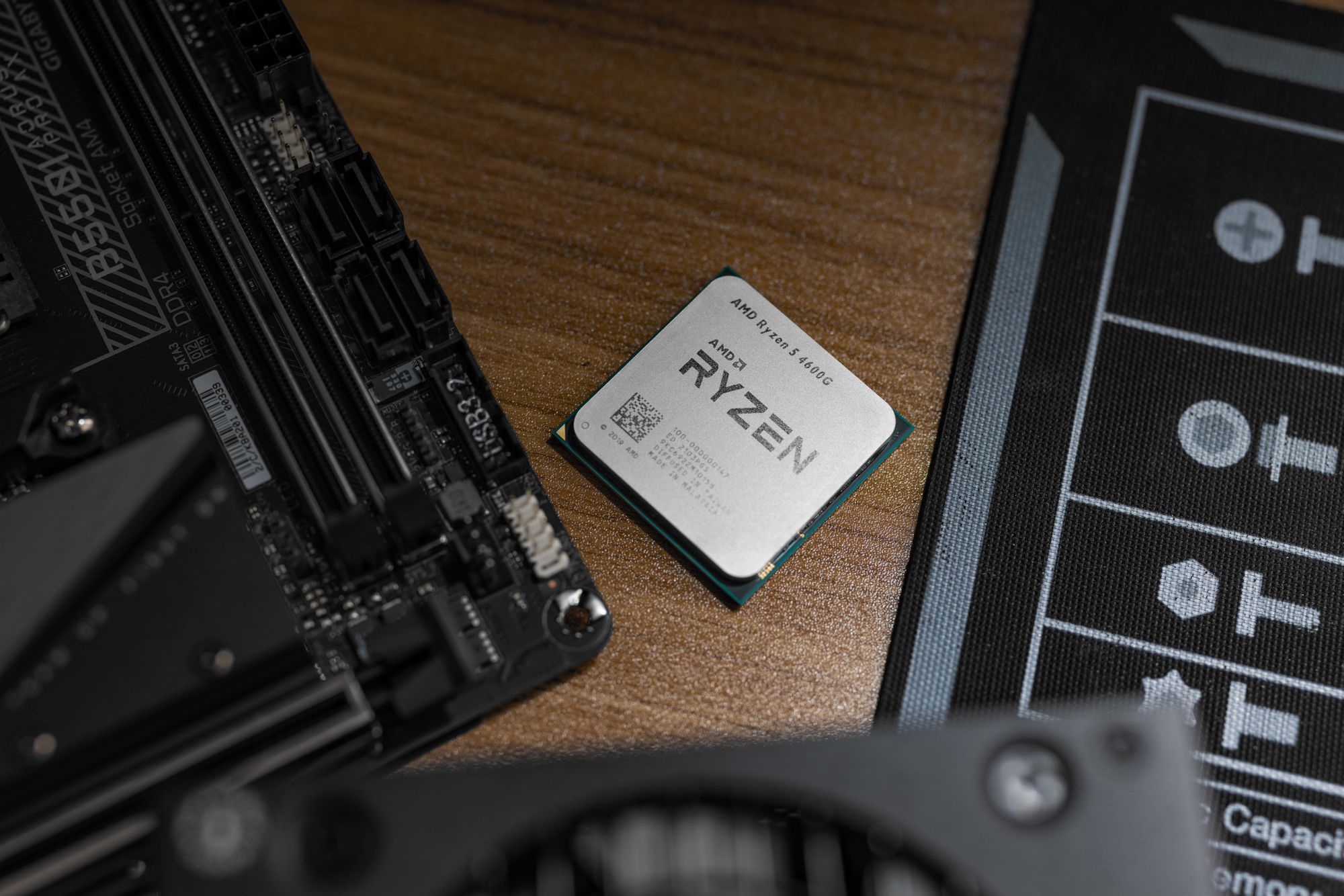
Fast-forward a bit and I came across a Ryzen 5 4600G in a trade. This was a chance to do something cool. I browsed around a bit, but nothing caught my eye until I remembered I have a friend in one of my discord servers that fell down the SFF rabbit hole a few years ago. He sold off his ATX and E-ATX stuff and fully committed. He showed us renders of a case called the S4T a while back in 2019. It was awesome. I enjoyed all the updates he talked about, but I was all about GPU power and never thought much about anything smaller than the M1. I also had not made the connection between NFC and the Skyreach cases yet. But now? Now was the time. He sent over a video of the S4T when I was fishing for inspiration.
It all hit me like a ton of bricks. The chill music and lighting that hooked me into all of Josh’s other videos started, and we were right into the meat of the information. Josh went straight into why he makes cases and who he makes them for. Sure, they are for other people, but they are cases he would buy for himself. I already made the decision at that point, but I watched the rest of it. Every minute was packed with information, but it was all familiarly digestible and easy to understand. I went back to my friend to see if he had any more information and he put me in touch with Josh. A few exchanges and we were off to the races. Along with the case I purchased a premium on/off switch, sleeved AC cable, and a Walnut Bezel.
A box as light as a cloud
The S4T arrived a day early. This almost never happens to me, so I took that as a good sign. The box was light, but the impact of its contents was weighty. The S4T is matte black with striking laser-cut lines that race around the surface of the case. It weighs in at 0.6kg but the 2mm thick panels that enclose the similarly thick chassis are just about unmovable. I had a paradox in my hands. Light as a rock? Solid as a feather? I chuckled. I spent a lot of time poking at it and photographing it, all the while marveling at the lack of fragility. Not a single visible flaw existed with this case. Everything was as perfect as it was perfectly executed. Every screw is countersunk, and every piece is placed in harmony. What about the accessories? Right… I ordered accessories. I actually forgot that detail until the next d—a few days later. I needed to move this build to the weekend to fully appreciate it.
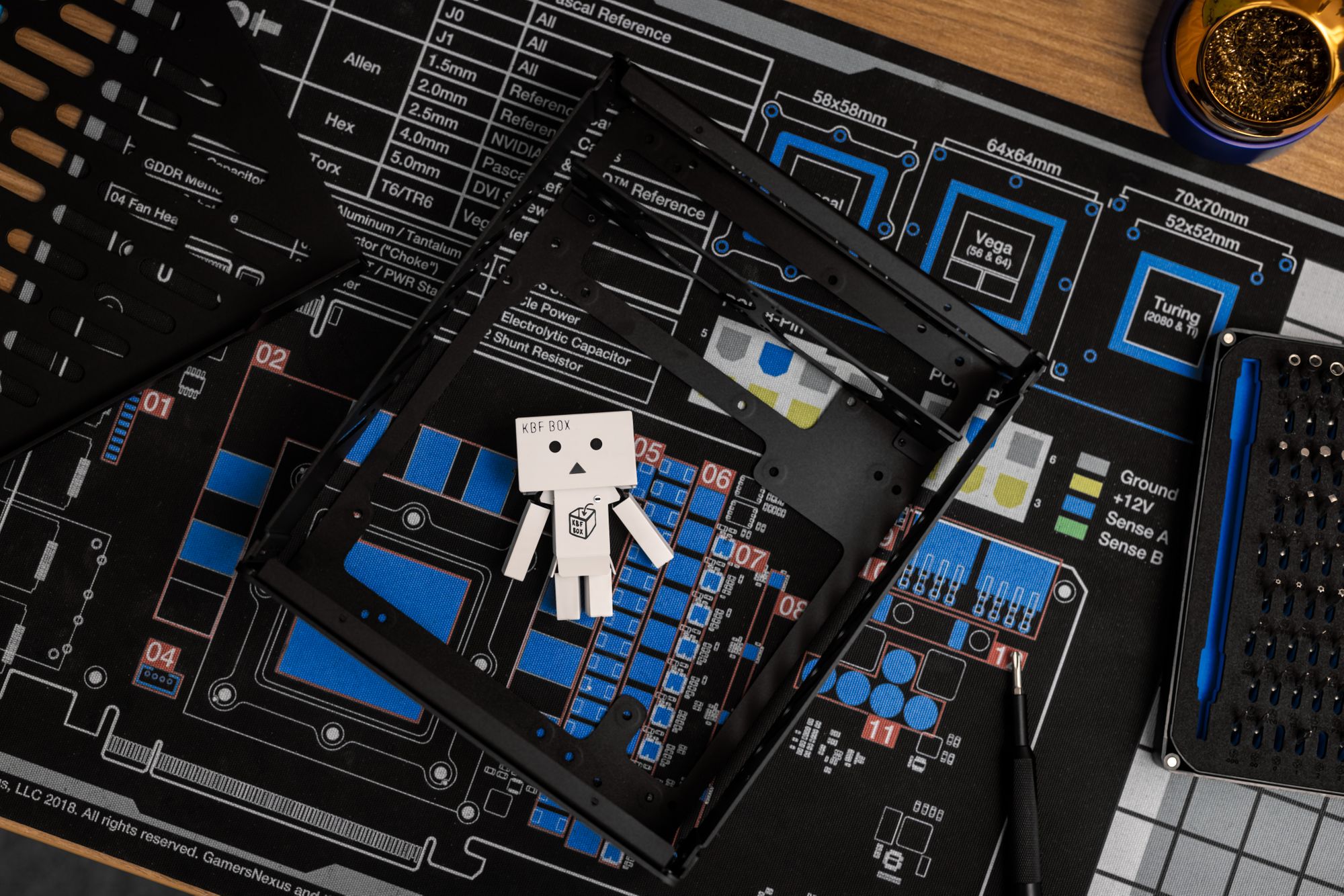
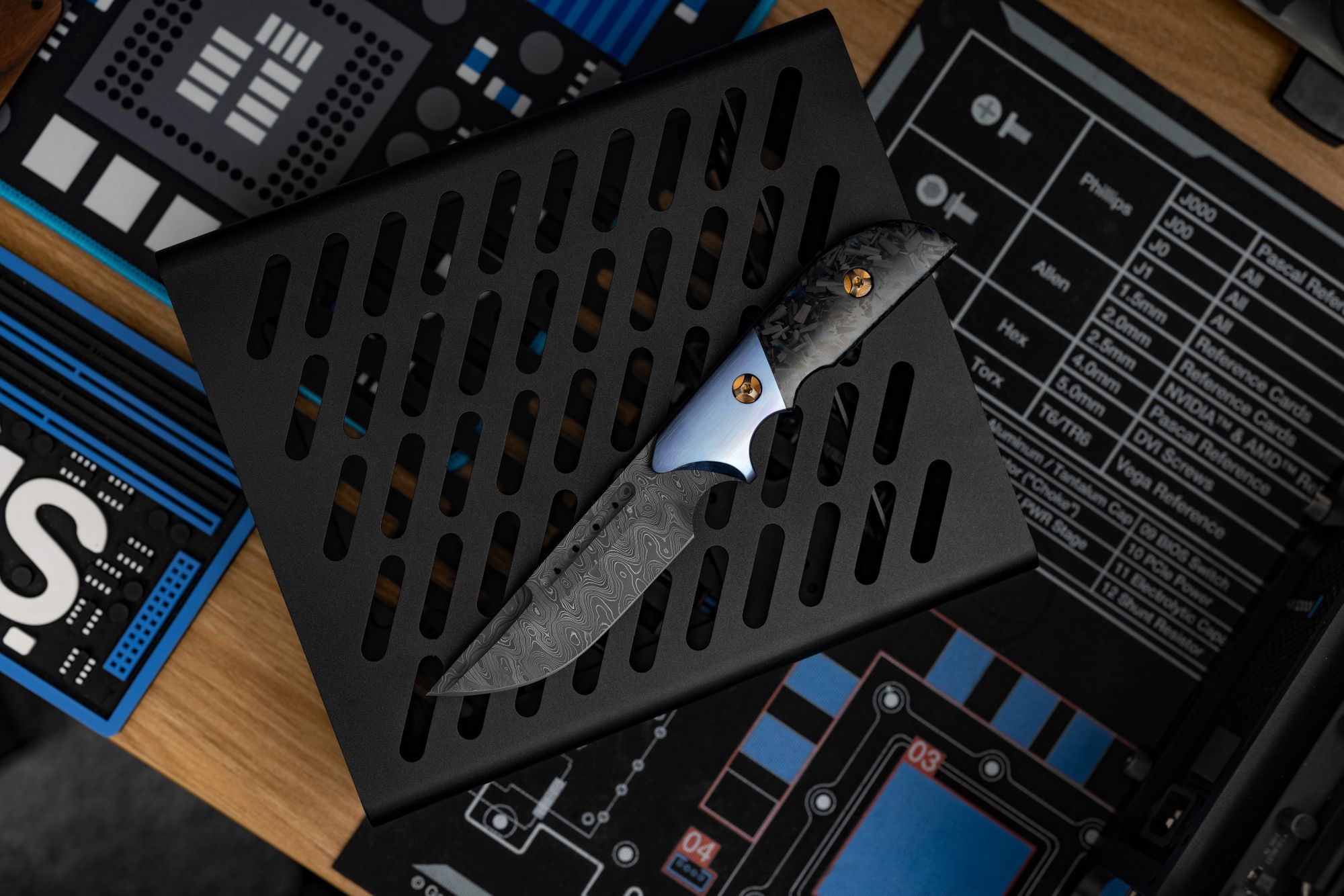
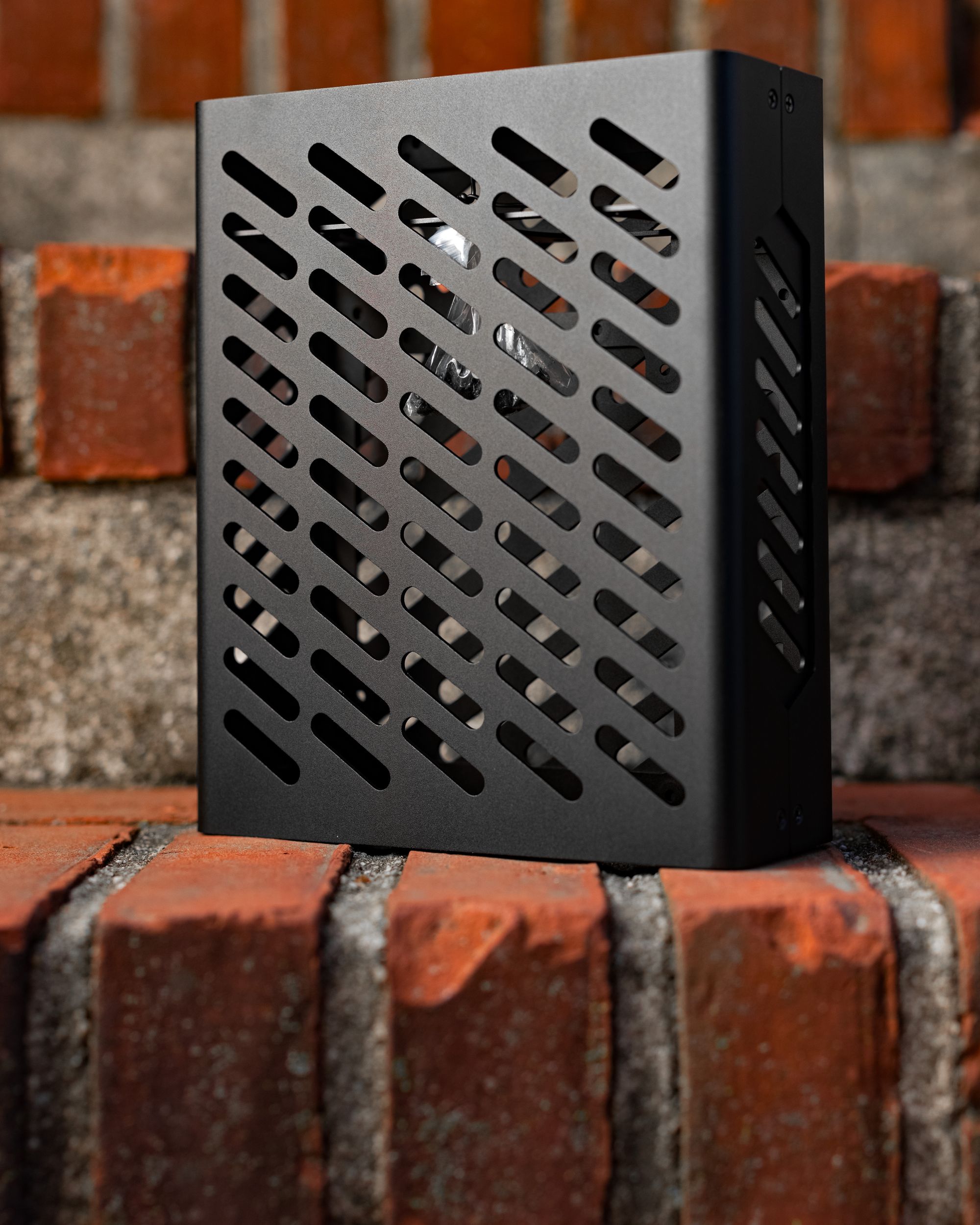
When Josh mentioned a walnut bezel, I did not think about it too much. I knew wood was one of my favorite subjects, so it was an easy yes from me. What I did not expect is the overwhelming amount of character it added to an already visually interesting case. Another very cool surprise was the 1/100 marking along with Josh’s signature. After installing it along with the premium on/off switch, the Skyreach name started to echo in my mind with meaning. Detail after detail went into this case. You feel every moment of it down to those middle-of-the-night sessions where too much time was spent on something few were likely to notice. This case and likely every case before that I never got to experience were created by a down to earth dude who was reaching for the sky.
Oh, and I pressed the super tactile power button like 400 times before I installed it. That thing is great.
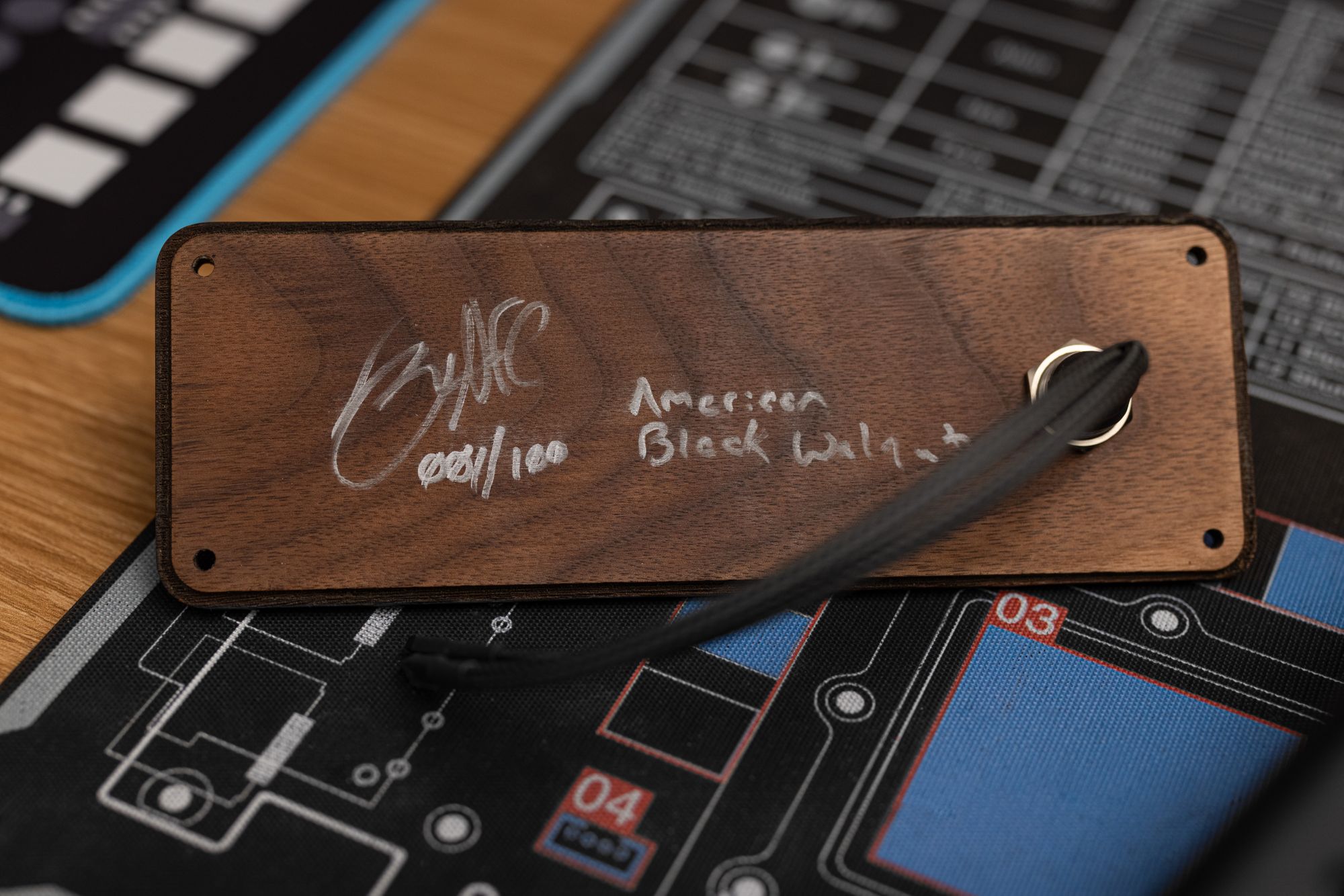
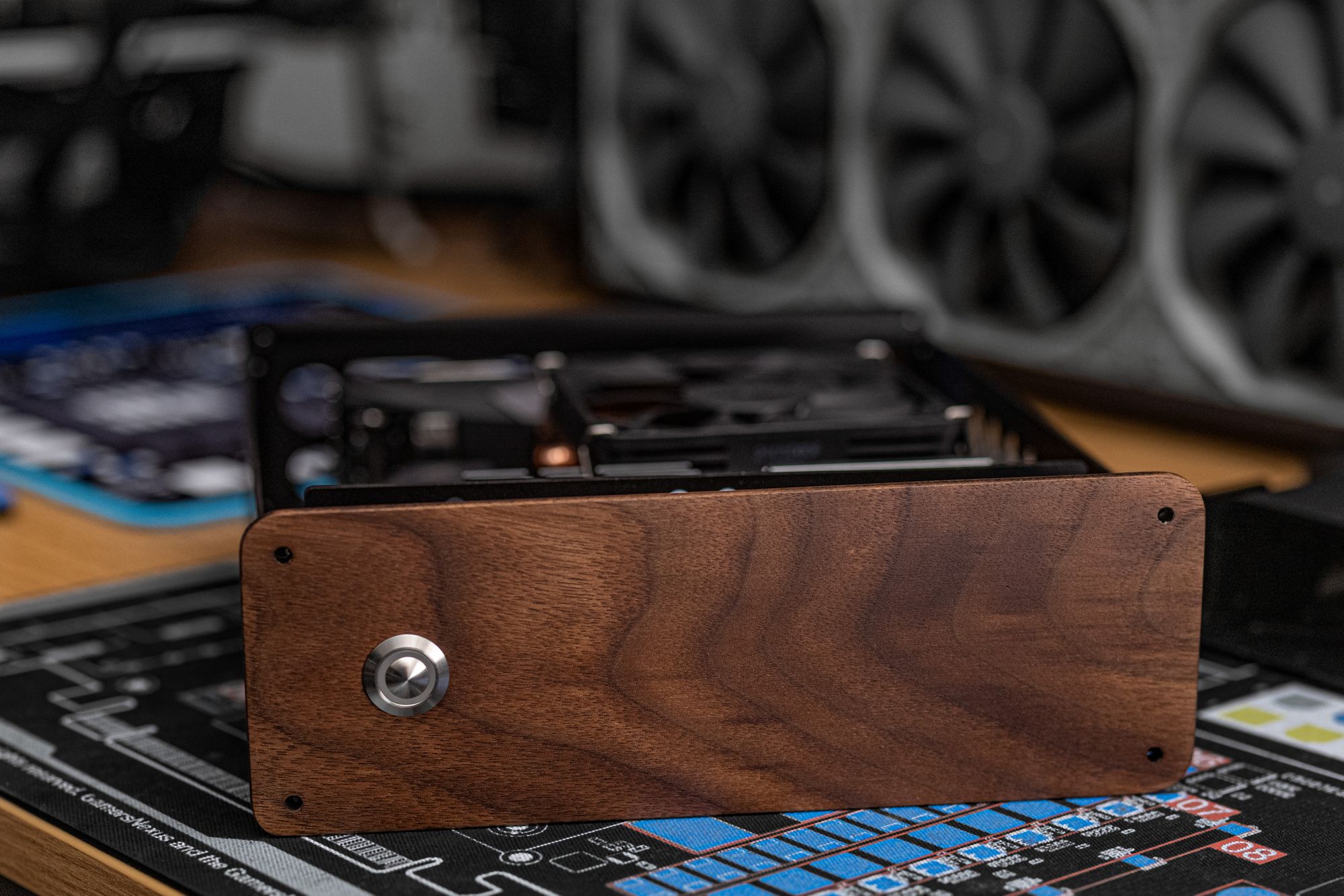
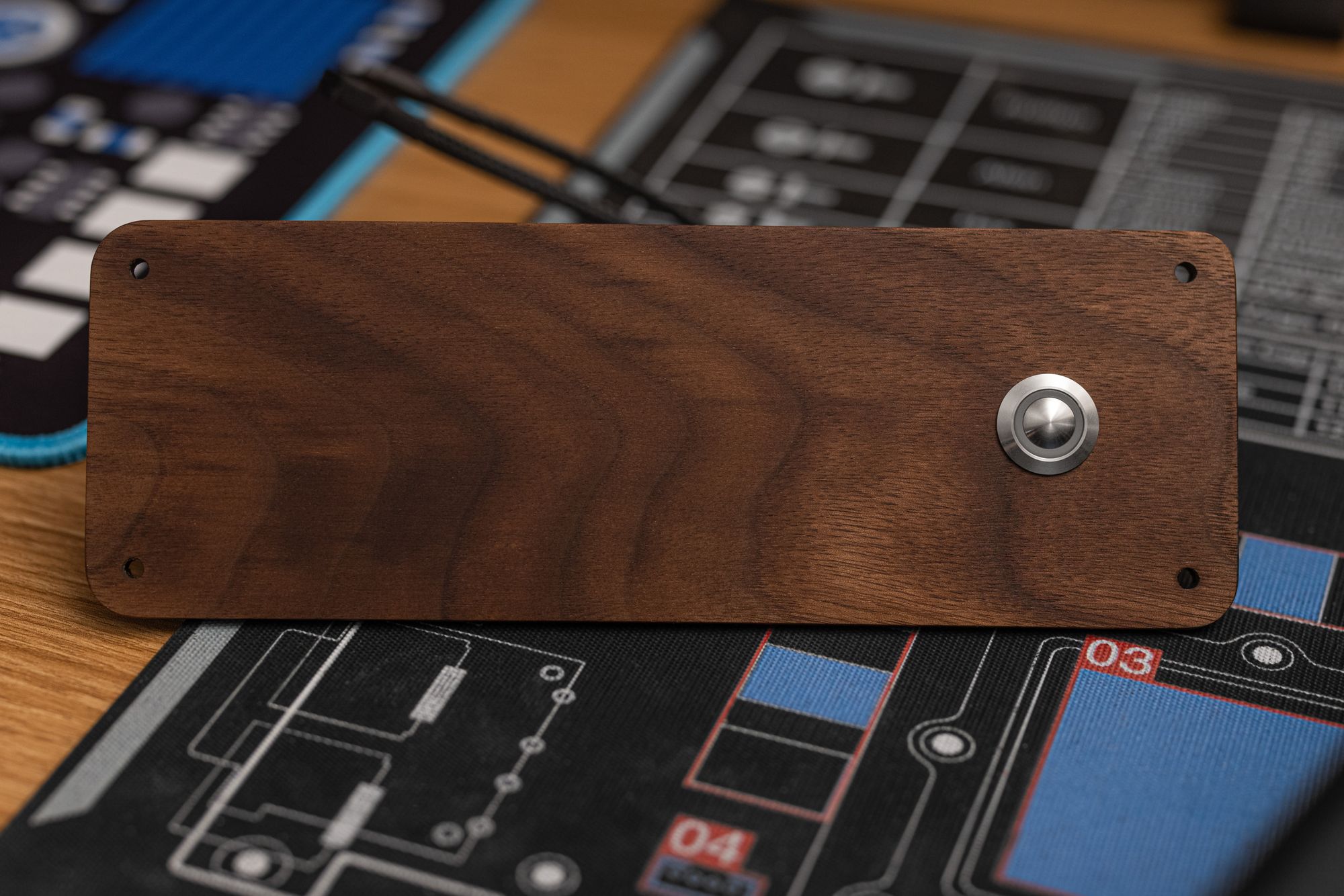
Can you like… tell us what components are going in this thing already?!
Right. That would be helpful, wouldn’t it? This started out by trading for a 4600G. My 3950X/5700 XT powered full custom loop got roped into media center duties when I sold the 3400G fueled InWin Chopin build to someone who needed it in a pinch. From there I chose an open-box Gigabyte B550I AORUS PRO AX. This brought the price down to too good to pass up levels. After consulting with the same friend that put the S4T on my radar, I went with the AXP-90R Full Copper for cooling. 32GB of Trident-Z Neo and a 1TB MP600 Gen 4 NVMe drive storage were carryovers from previous builds.
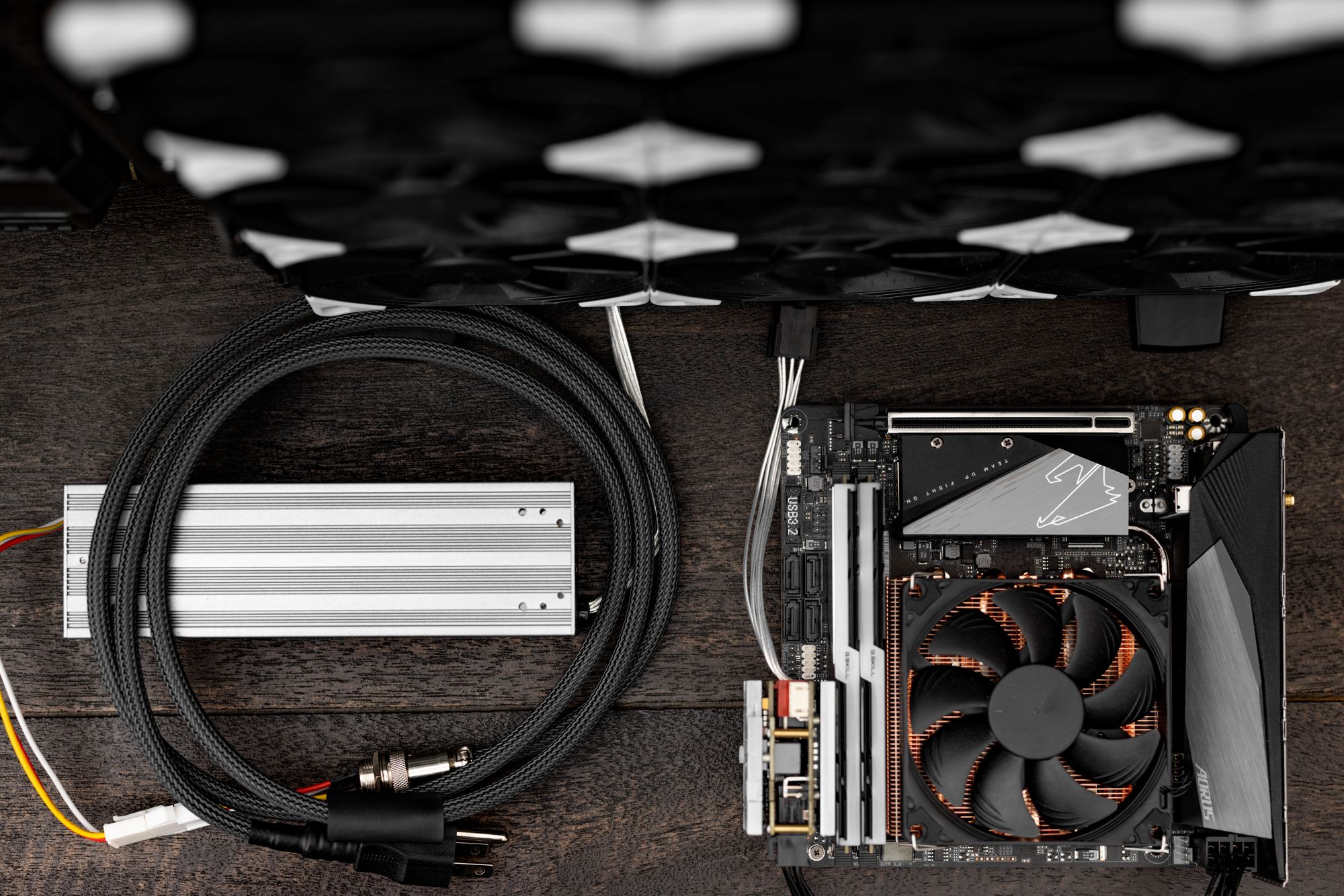
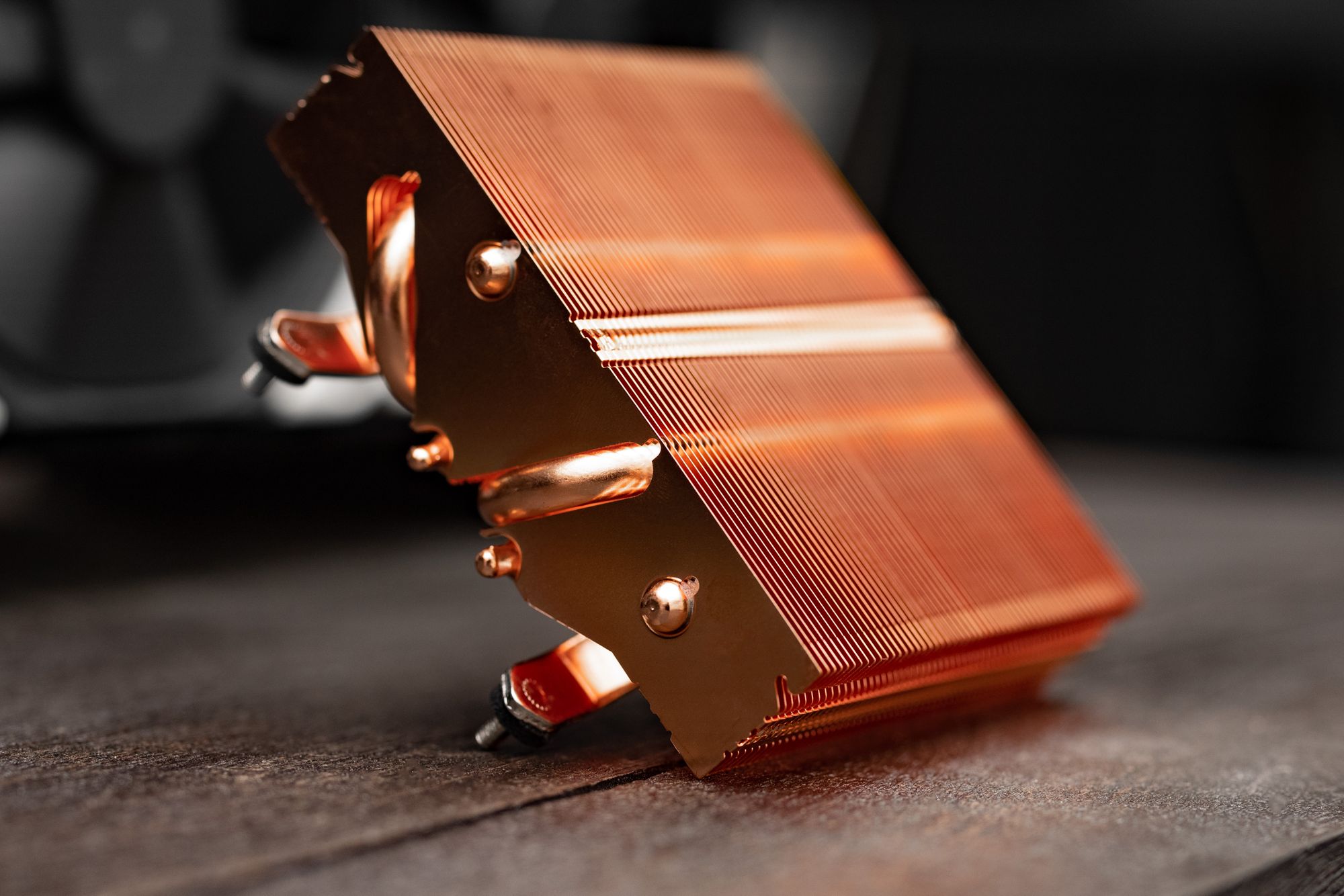

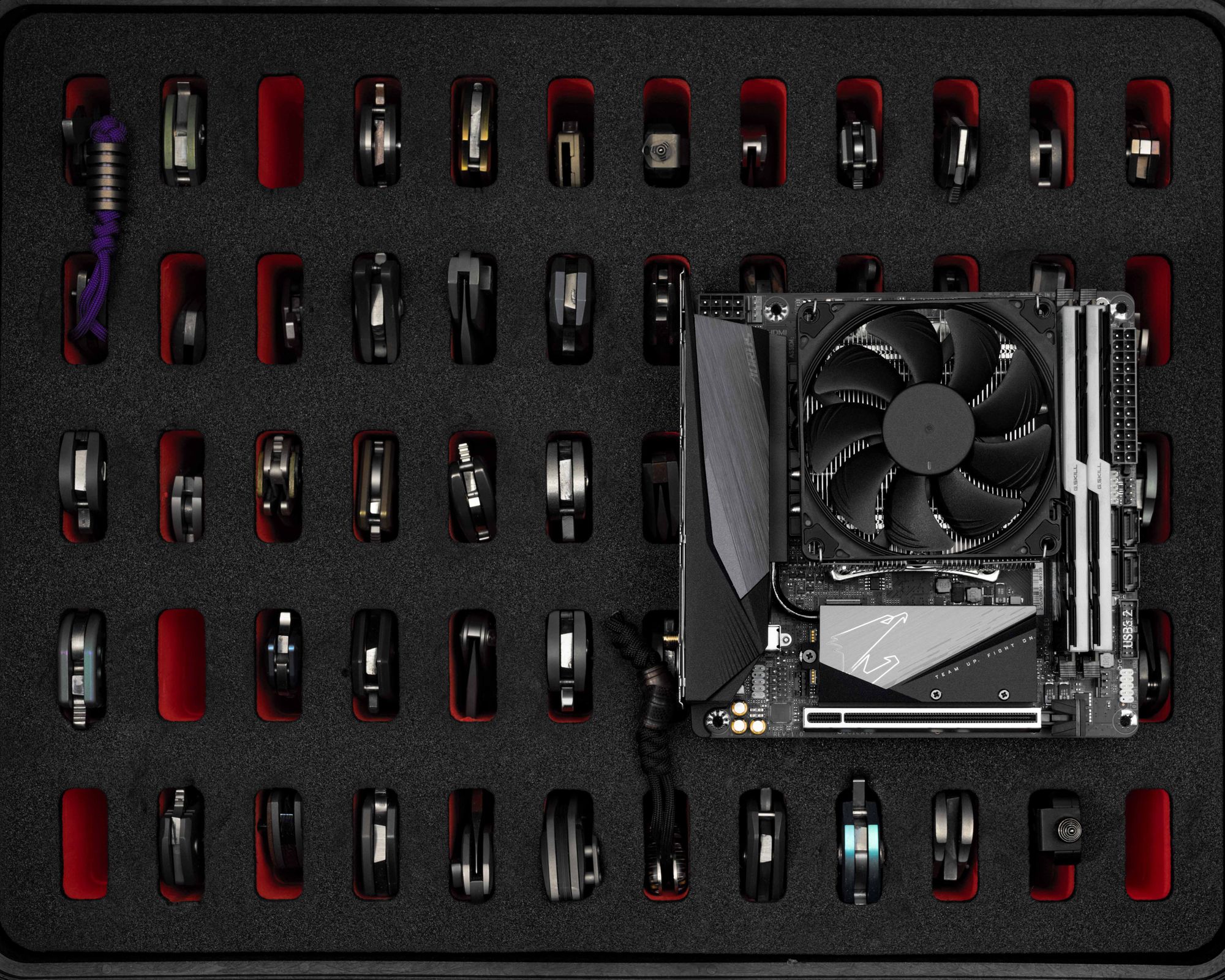
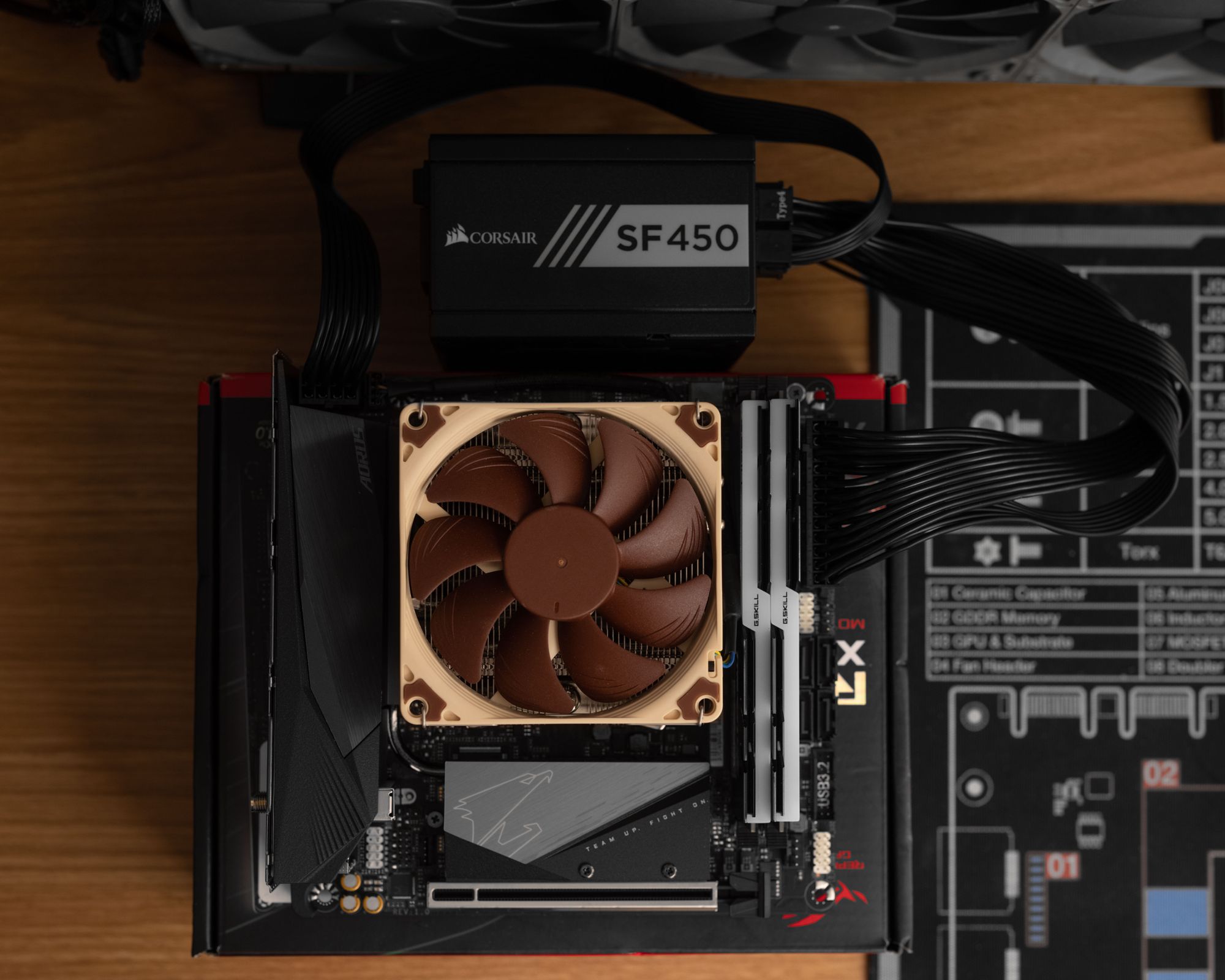
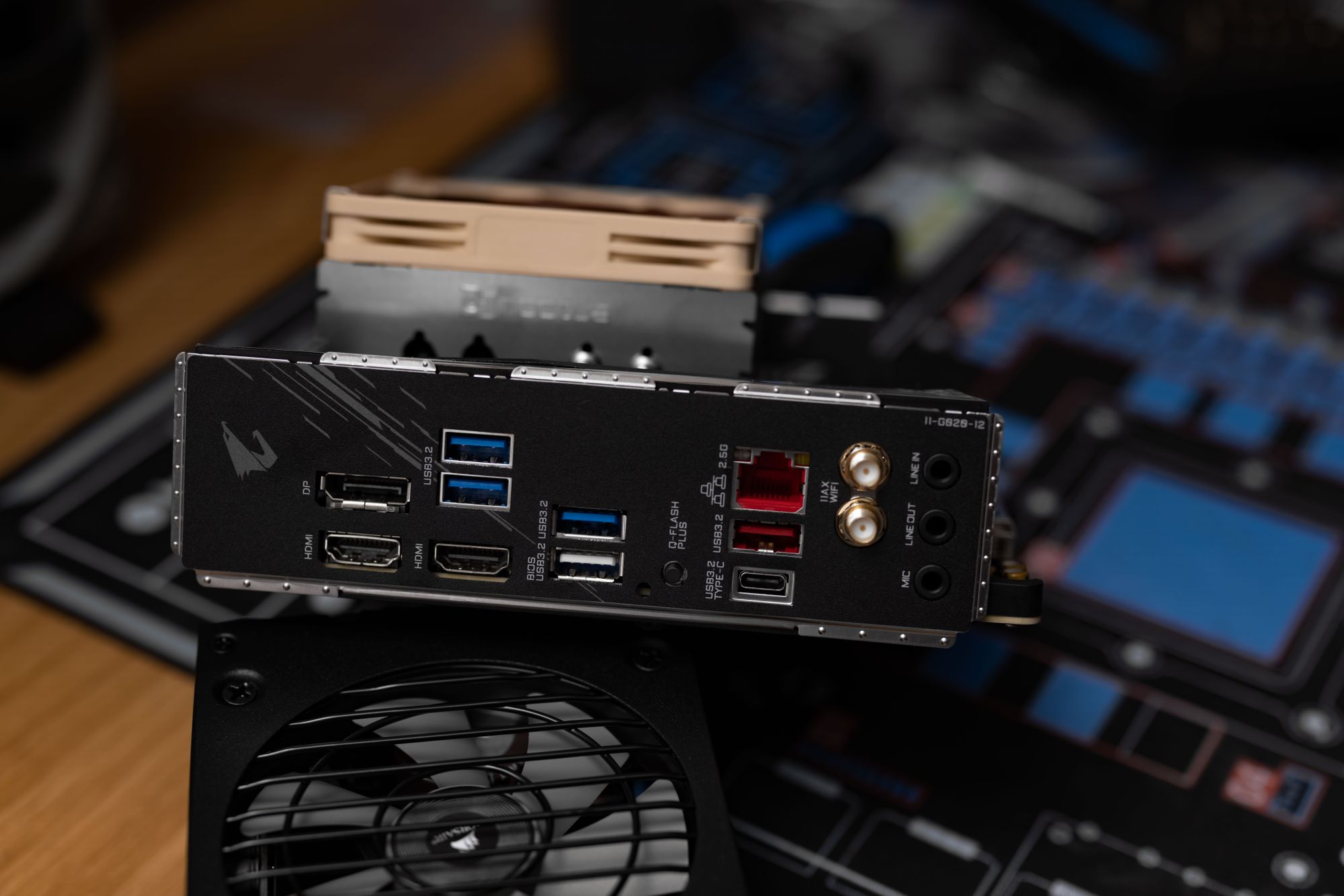
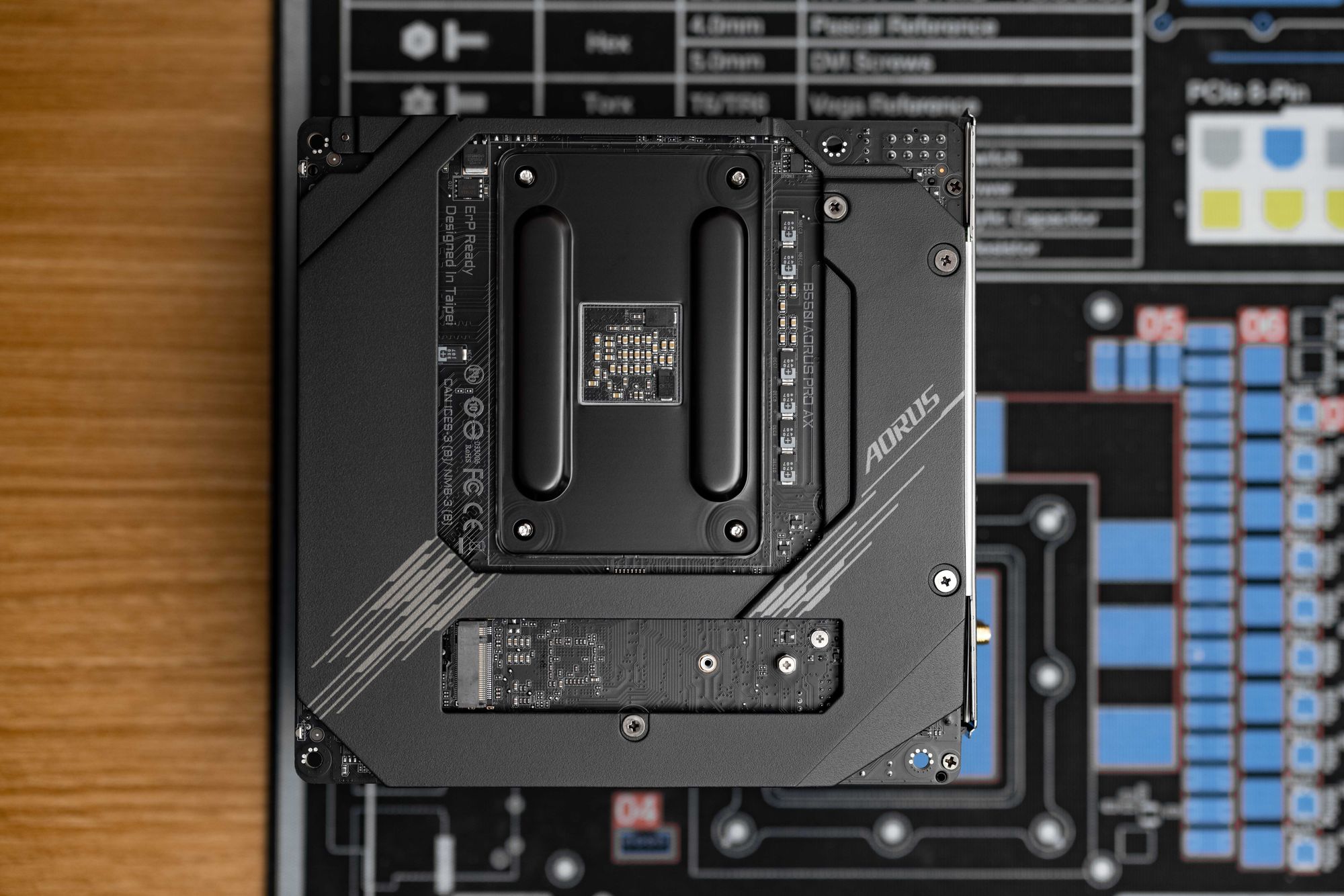
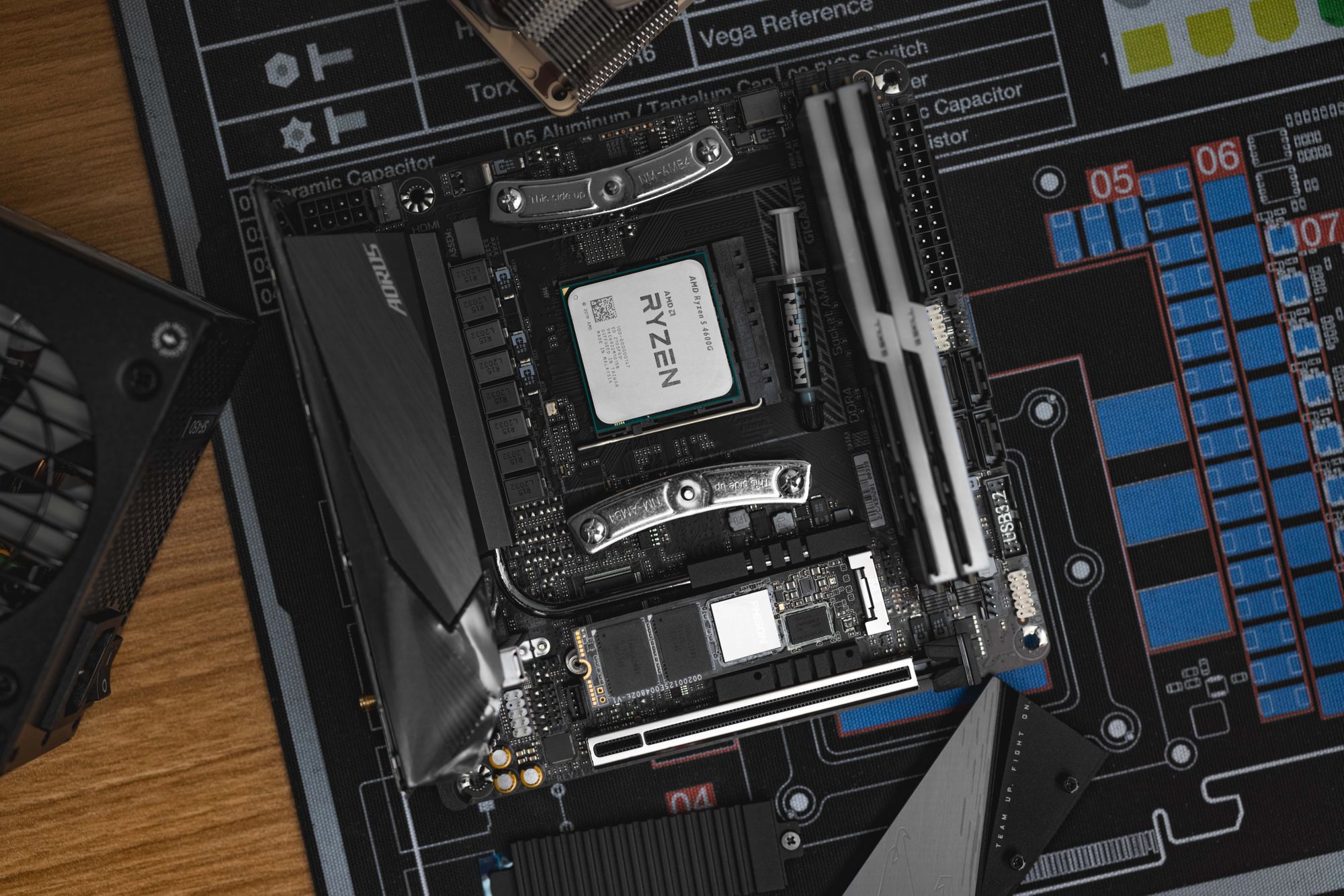
The power supply was the only real obstacle. Initially, I went with the HDPLEX 200W DC-ATX + 400W AC-DC Ver 3.0 pairing, but quickly discovered the 400W brick did not fit. Why did I try to pair those? Good question. The answer is availability. The 200W AC-DC was out of stock with no expected ETA. After watching the launch video a few times, I had a lightbulb moment after Josh went through a few configurations. But the light bulb was more of a brain-fart in disguise. I was not paying close enough attention and did not realize he was talking about sub-ITX motherboards at the time. As a temporary measure, I ordered a 240W Dell PA-9E. This will live outside of the case and makes me feel like a cheater, but it is just a stopgap until a restock of the HDPlex part.
Things I loved about the build:
- Fast APUs! The 3200G and 3400G were capable little CPUs, but 3000 series, they were not. The 4600G is noticeably more capable and the 5700G I will be installing later today should kick that up even further. It will be nice to have something I can fall back on in an emergency should I need to use its full power.
- The star of the show, the S4T. Inside and out this case is stunning. The finish is very durable, and resists fingerprints better than most other matte black surfaces I have handled. The screws that come with the walnut bezel pull a 180 from the understated, countersunk black screws by protruding and rounding off. I was confused by this when I saw them in the bag, but after installing them, they are the PERFECT compliment to the amazing anti-vandal power button. The silver contrasts amazingly with the walnut and would not have looked as good in black. I cannot repeat enough that Josh thought of just about everything.
- The assembly process was a breeze. PC building has simplified a lot over the years. These days I use M.2 drives exclusively, as I have hundreds of TBs of networked storage. This means less cables. With no dedicated GPU to install, even less cables. The S4T I received was the first in the wild, so I did not have any instructions, nor did I need them. Josh used the same screws throughout, so there were few chances to mess anything up. It was one of the most common-sense layouts I had come across (at least in ITX form).
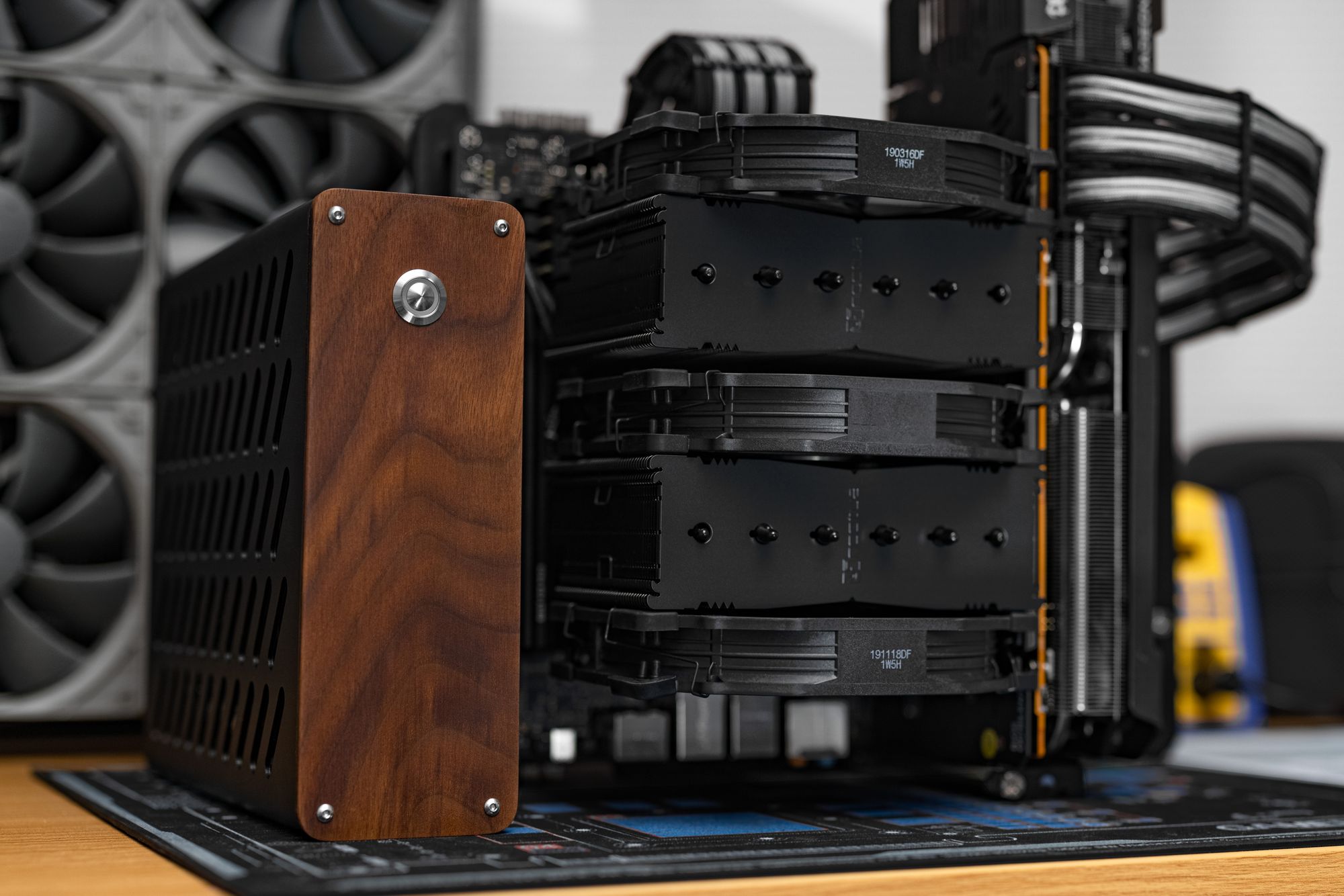
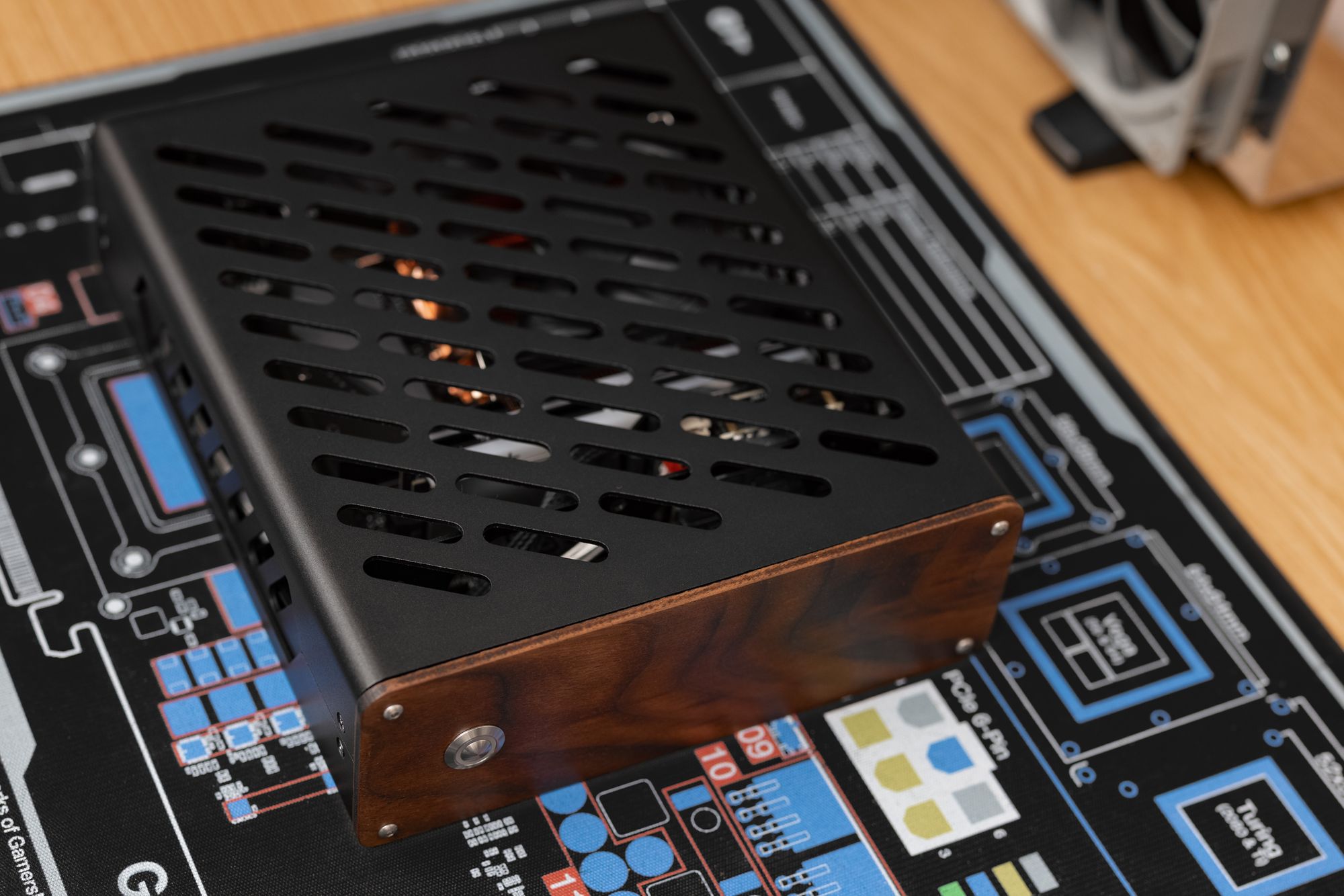

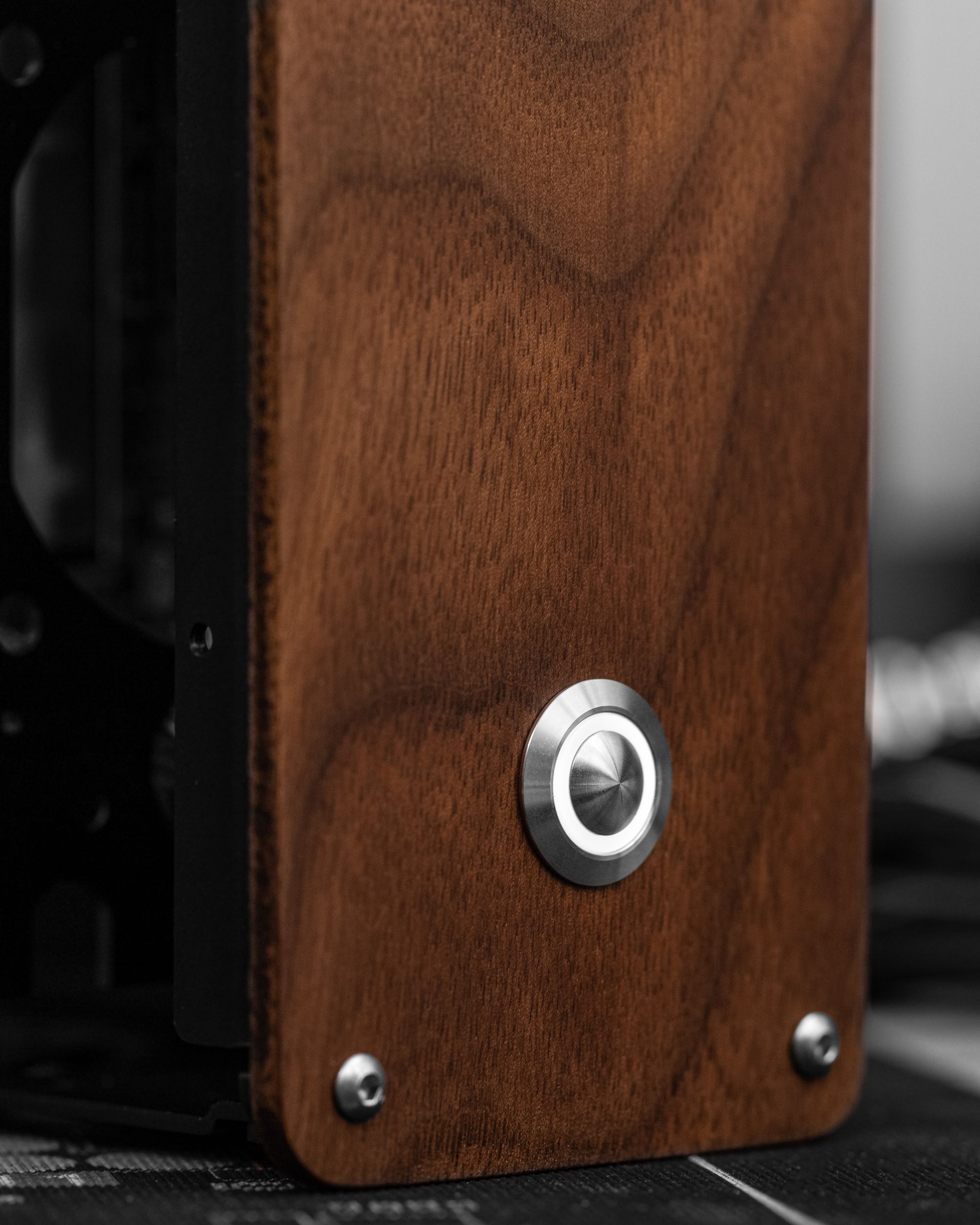

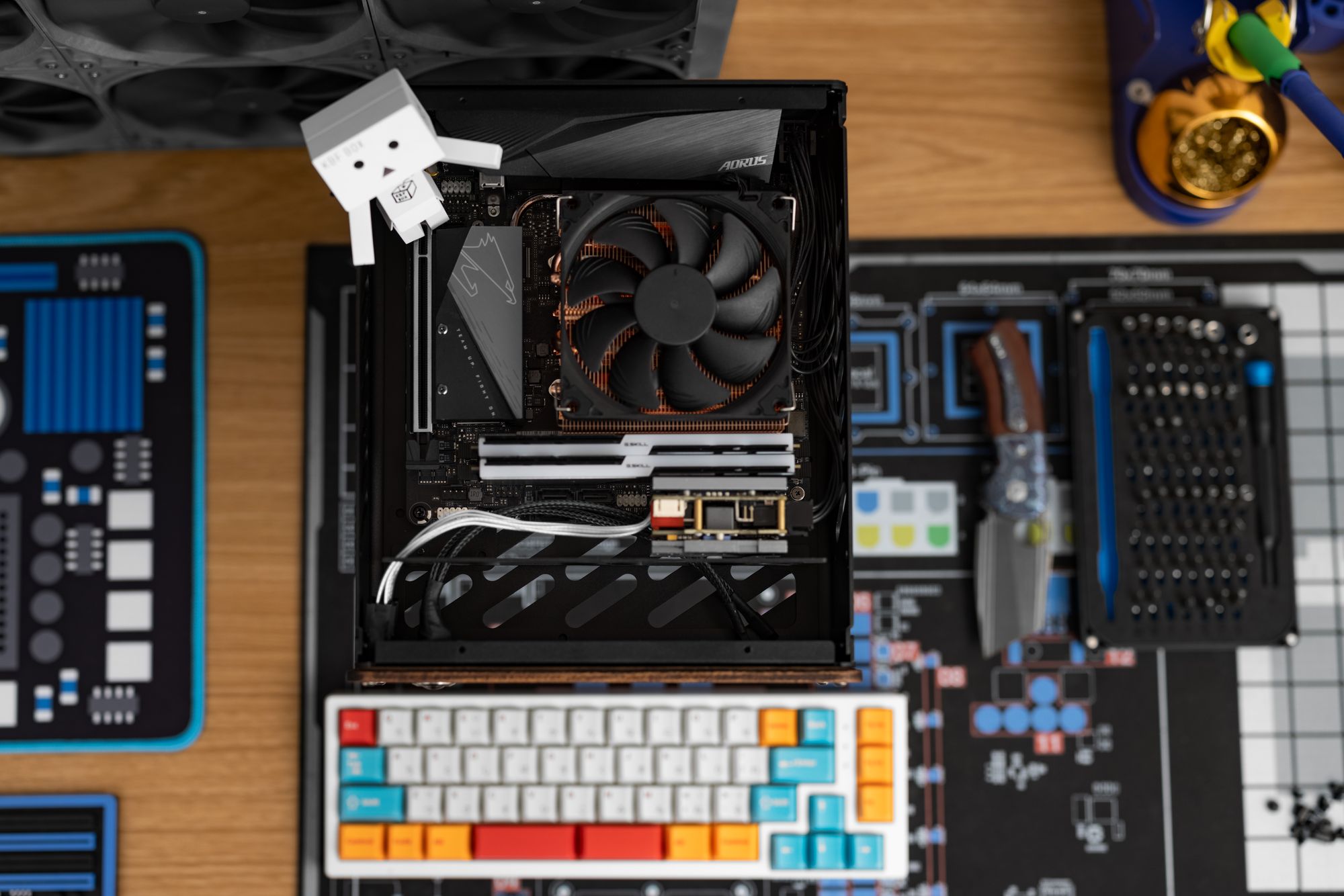
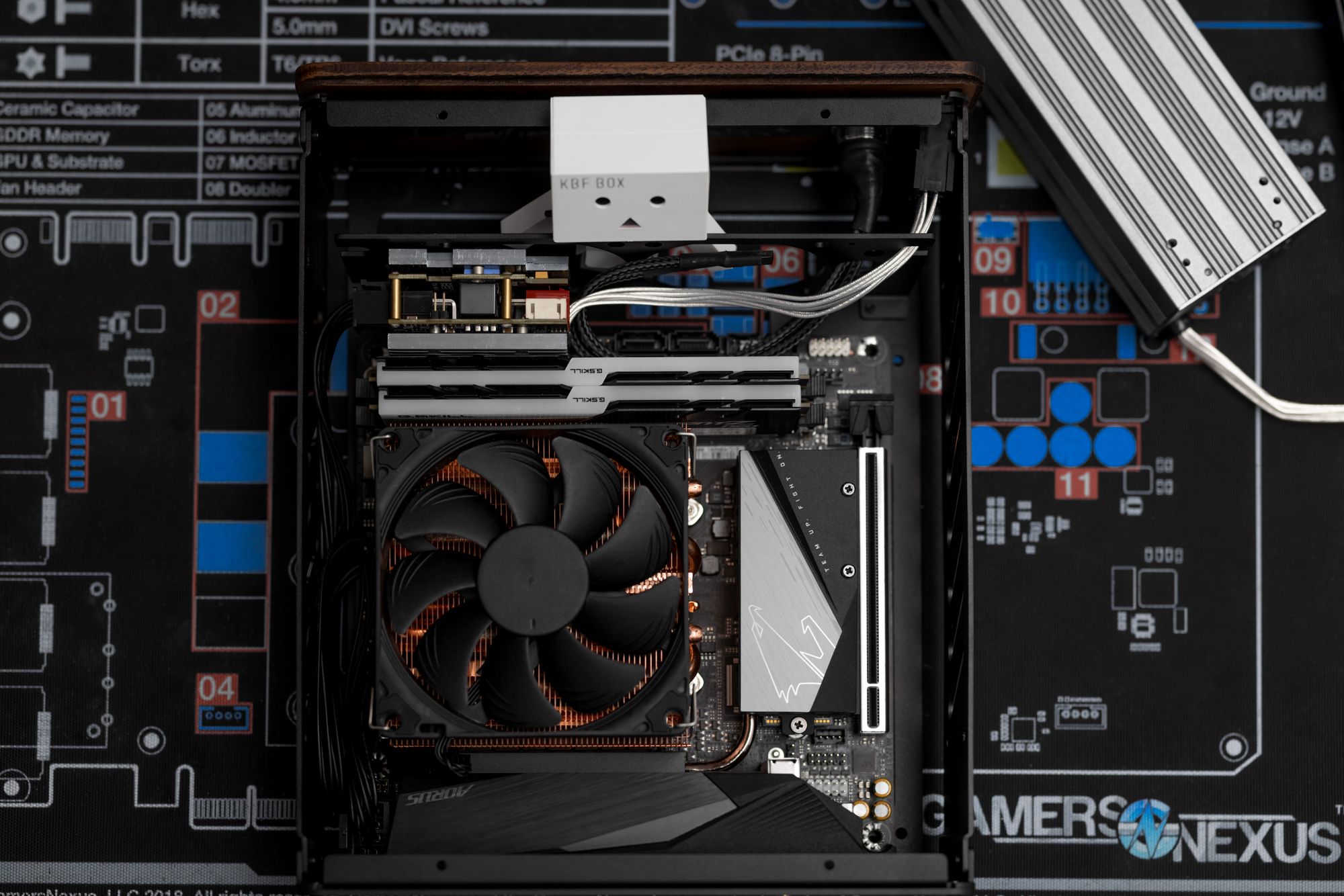
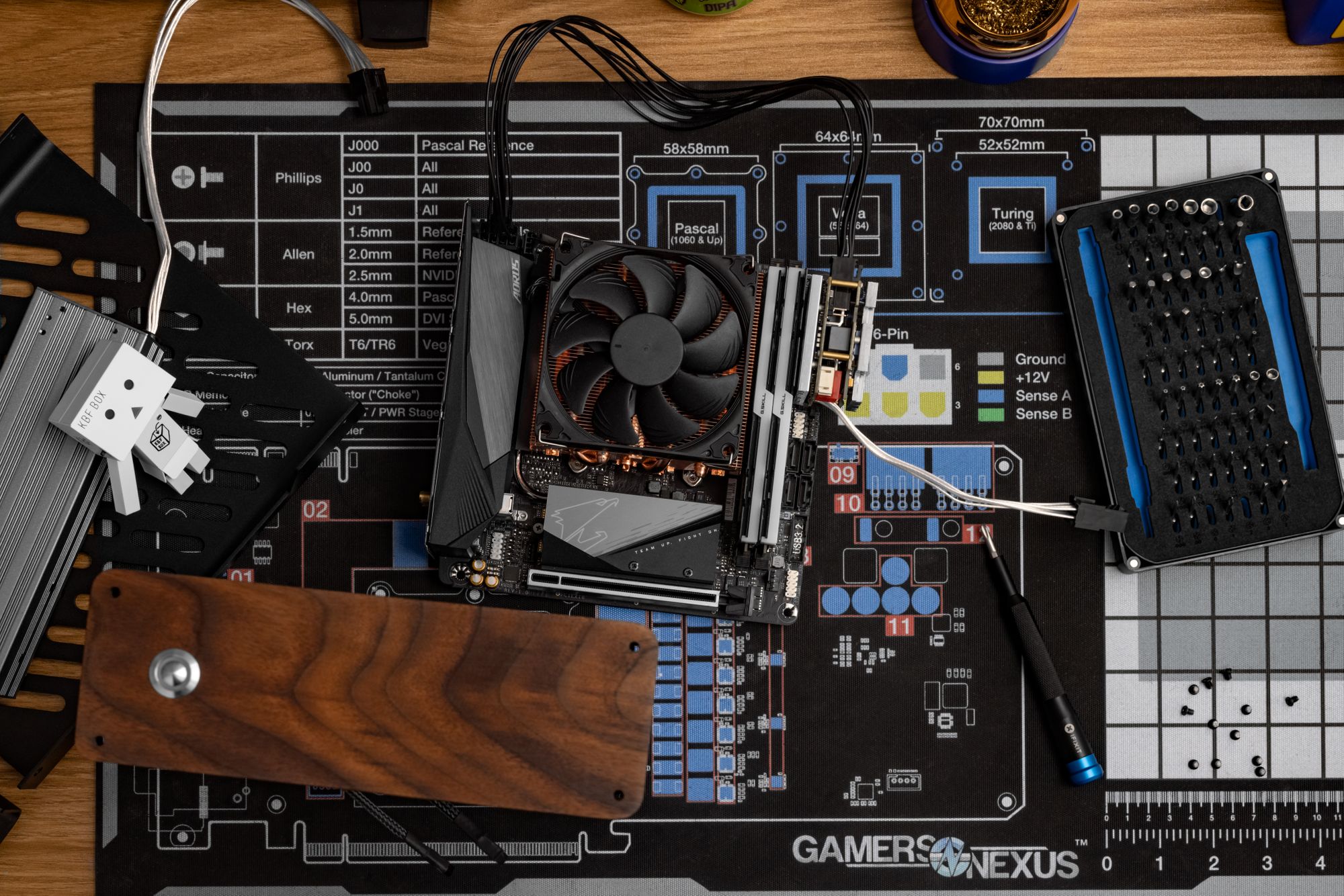
Challenges with the build:
- I hate this power brick. It is a very temporary solution, but it has already given me a headache. It nearly pulled the whole build off the table when the double-sided tape unstuck from underneath and yanked the lightweight system to the very edge of the desk. That HDPlex cannot re-stock soon enough.
- Component placement on ITX boards can be a pain. Keep out zones are less respected since real estate is at a premium. This means when I went to mount the DC-in adapter, I bumped into a plastic shield meant to protect nearby caps. What I had to do here was use the larger adjacent AC-in cut-out, but with a black washer to make up the gap. It lives in the rear of the system, out of sight, so I am fine with this since it is temporary.
- Turbulence. If I were to shop for coolers again, I would get something a bit shorter than the AXP-90R. It clears the panel, but it is rather close, so you do get some turbulent noise past 80% fan speed. That said, the cooler does an excellent job and so far, has not needed to go that high unless purposely subjected to high stress.





Planned and possible changes:
- Going brickless. The most immediate change to this build will be the HDPlex 200-watt brick. For anyone else planning to go with an S4T soon, Larry of HDPlex says they expect stock in later July of 2021.
- A future facelift. I love the walnut panel I have installed currently. It has a matte finish with a level of chatoyance that allows it to demand attention, but also blend in my home décor. While I was chatting in the Not From Concentrate community discord, everyone was throwing around ideas for a front panel and the NFC team was all for any of the ideas pitched. So when I do feel the need to mix it up, I know that door is wide open.
- A possible complete transformation. The other definition of the T in S4T is transform. If I ever decide this PC needs a dedicated GPU, Josh has two options for a console style or stacked transformation of this case.
How does it perform?
One of the things that I cannot help but notice with simple systems is boot time. My laptops are very snappy when it comes to powering on and getting straight to the desktop. This system produces a similar result when comparing this to my main PC with its many PCIe devices.
For CPU related tasks, I benchmarked using Cinebench R23 and achieved 13698 multi, and 1507 single core. Clocks were consistently in the 4.2 to 4.3 all-core range throughout the test. Peak temperature was 89.6C for the last 60 seconds of the 10-minute all-core run. Peak clock speed for the single core run was 4.65GHz. The 5700G runs significantly warmer than the 4600G that I had previously. I ran PBO with it but will not be doing so with the 5700G. Performance is plenty good with frequent boosts to 4.65 vs the 4.3 of the 4600G. I ran Passmark 10 since it was in my Stream library, but I do not use it enough to have any appreciation for the numbers. For those curious, it scored a 6756 overall with 10921 in essentials, 10189 in productivity, and 7520 in digital content creation.
For gaming, I am only including numbers out of sheer curiosity. As far as temps are concerned, looping Heaving Benchmark for 30 mins on basic resulted in an average temperature of 58C while peaking at 69.3C. GTA V saw 61C with peaks of 72C during 30 mins of play on low settings. The average frame rate was a bit all over the place, but seldom dipped below 35FPS. That said, it was not fun. This would likely be good at eSports titles, but I certainly would not go out of my way to purchase it for that use case.
Final thoughts
This build was a blast. Just as I found the water cooling community to be filled with great people, I also met some interesting and passionate people in the SFF community. Their exchange of ideas in real time is incredible to watch. In Discord, on reddit, and SFF forums, you see people creating compatibility lists for coolers, power supplies, and all kinds of ways to tame their low liter beasts. Lots of 3D printing and conceptualizing all to work together for the same ideal of more power, less size. Case makers are often long-time members that are fully open to and thrive from community input. Many of the cases have tons of revision to make them better. This is something you just do not see in the larger volume… and larger volume case space.
I love functional art. This build can crush just about any task, and it looks amazing doing so. My builds tend to catch the attention of my more tech savvy friends, but those who have no idea what they are looking just shrug and move on. This build unites all in asking “what is that?!” and I love it.

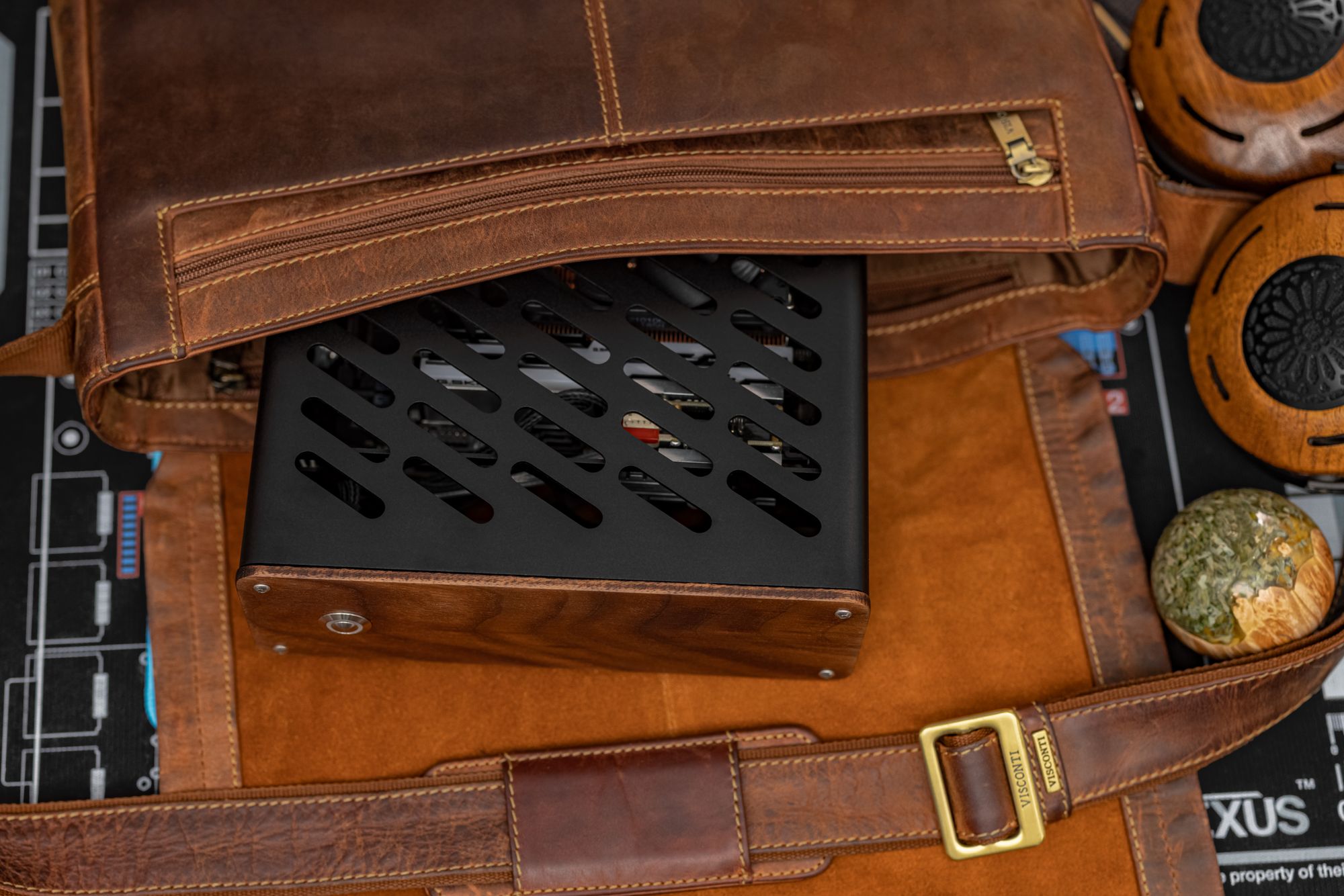
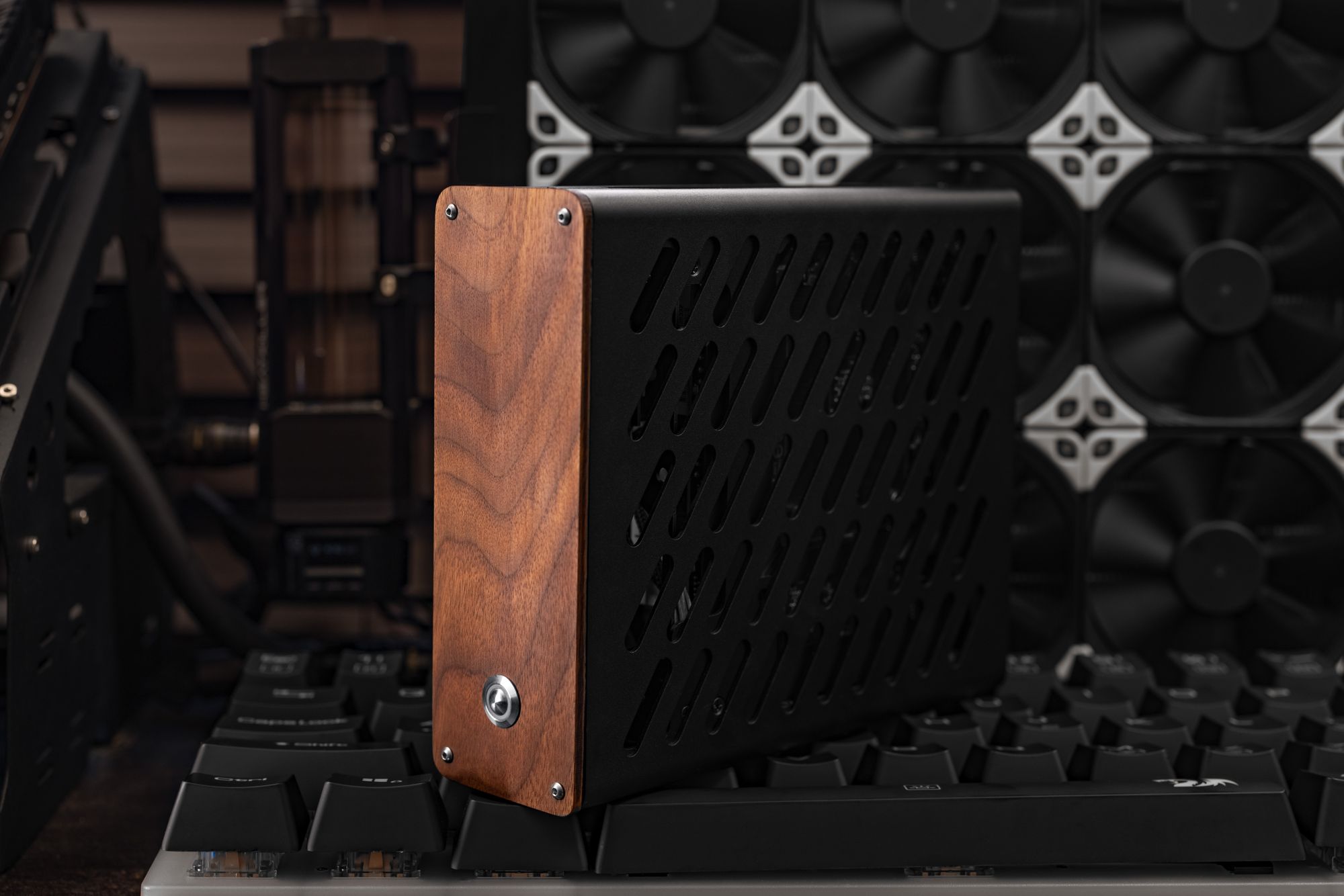
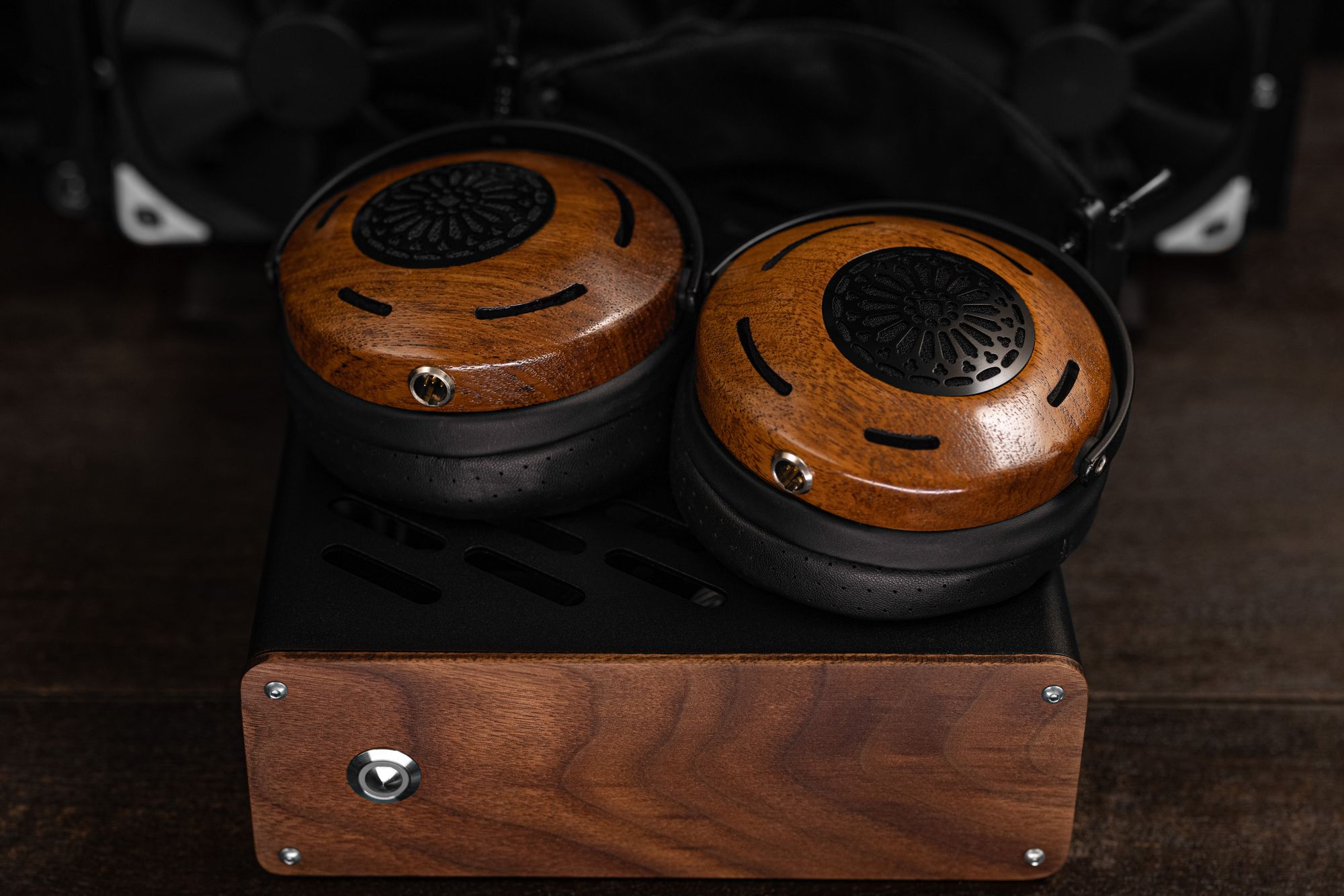
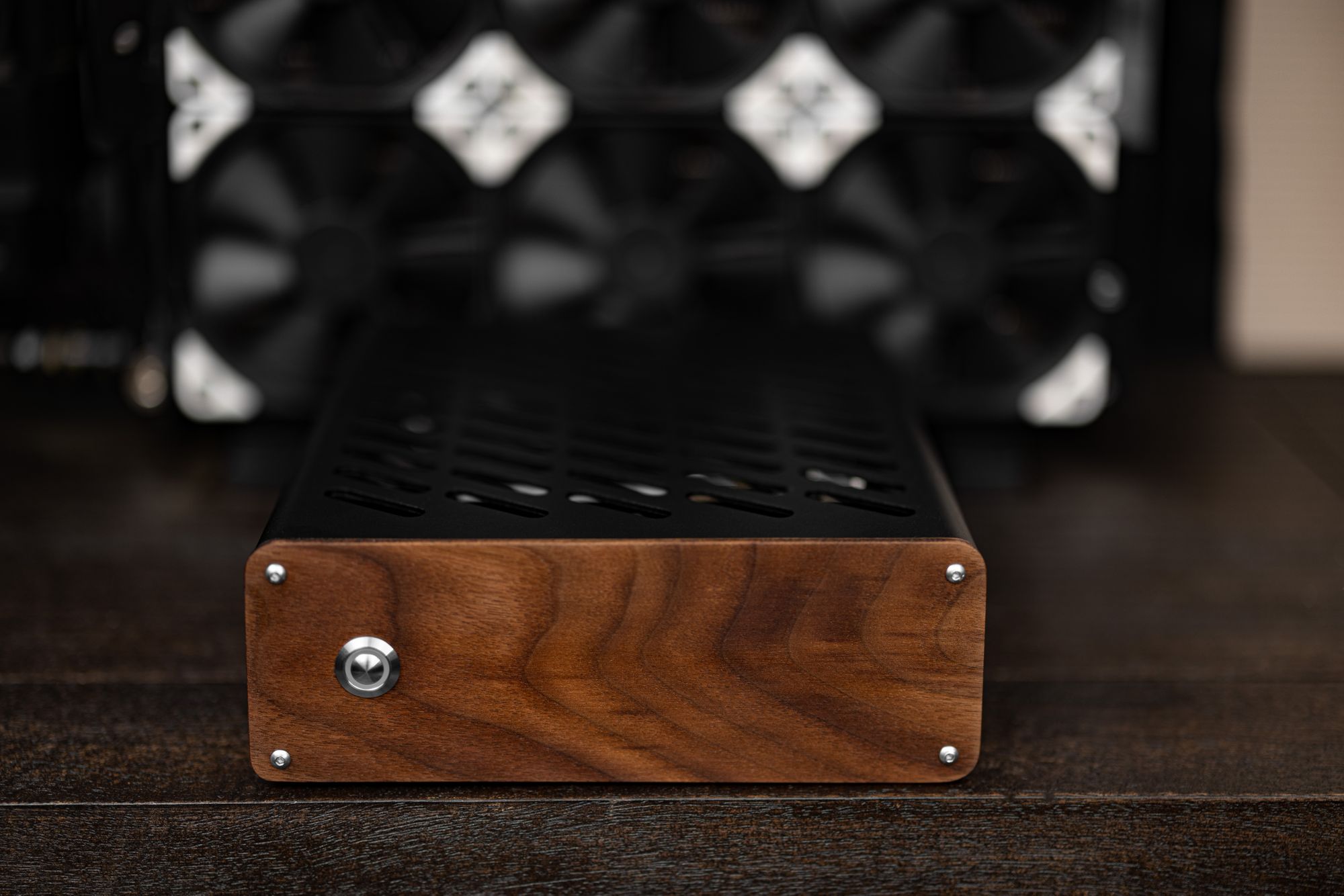

Comments?
Leave us your opinion.